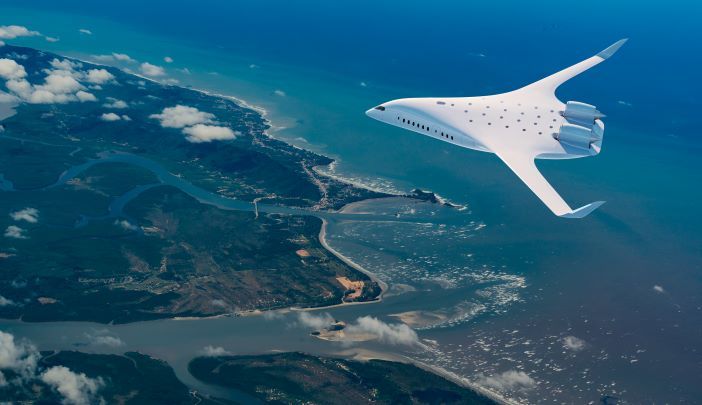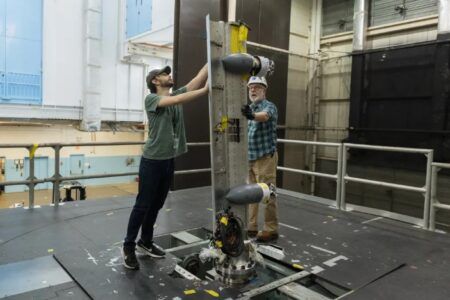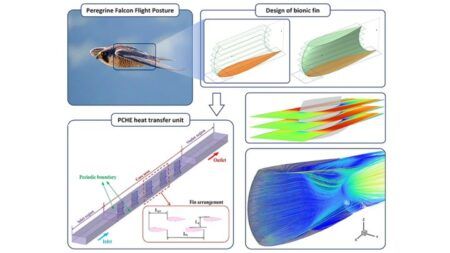JetZero has picked SHZ Advanced Technologies to develop the liquid hydrogen storage and distribution solutions for a potential variant of its Z4 blended wing body commercial aircraft.
The two firms will operate in partnership as part of NASA’s Advanced Aircraft Concepts for Environmental Sustainability 2050 project to analyze and design technical storage and distribution solutions, enabling the adaptation of liquid hydrogen in commercial air transport.
JetZero was awarded a grant in November 2024 to explore technologies that enable cryogenic liquid hydrogen to be used as a fuel for commercial aviation to reduce greenhouse gas emissions, according to NASA.
The Z4 is an a blended wing body (BWB) design offering a wider fuselage that acts as a wing, with all surfaces providing lift and reducing drag. According to JetZero the wider fuselage makes the airframe more compatible with liquid hydrogen fuel tanks, without sacrificing passenger seating compared to conventional tube and wing airplanes.
The first commercial BWB aircraft will be powered by conventional fossil-based jet fuel, delivering up to 50% better fuel efficiency and reduced associated emissions, JetZero also claims. Engines mounted on the top of the aircraft will also reduce noise pollution.
“The Z4’s all-wing configuration provides advantages for hydrogen integration,” said Tom O’Leary, CEO and co-founder of JetZero. “The wider fuselage allows for more efficient tank placement while maintaining passenger capacity.”
SHZ Advanced Technologies holds 14 proprietary patents, including for non-conventional liquid hydrogen storage and a liquid hydrogen compressor-pump and will provide industry expertise to advance technology that will help decarbonize the aviation industry.
“Our patented liquid hydrogen storage solutions are designed for ground, maritime and air transport mobility applications,” said Eric Schulz, founder of SHZ Advanced Technologies. “This partnership represents a significant step toward cleaner aviation.”
The Z4 is being designed designed in California and will be produced in Greensboro, North Carolina, USA, with entry into service planned for the early 2030s.





